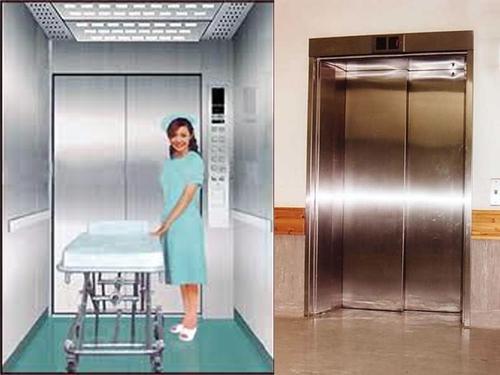Hospital lifts, often referred to as hospital elevators, are a vital component of any healthcare facility. They play a crucial role in ensuring efficient vertical transportation for patients, staff, and visitors. Hospital lifts are designed to meet the unique needs and challenges of healthcare environments, where time is critical, and patient care is of utmost importance. In this article, we will delve into the significance of hospital lifts and how they contribute to the overall functionality and efficiency of medical facilities.
The Importance of Hospital Lifts
- Patient Comfort and Care
Hospitals are dynamic environments where patients require timely and efficient access to different floors and departments. Hospital lifts are equipped with features such as spacious interiors, smooth acceleration, and quiet operation to ensure patient comfort during transit. This not only minimizes discomfort but also supports the recovery process by reducing stress and anxiety associated with movement within the hospital.
- Time Efficiency
In healthcare, time is often a critical factor. Hospital lifts are designed for swift and efficient transportation. Their advanced technology, including destination dispatch systems and priority service, helps streamline patient and staff movements, reducing wait times and ensuring that medical professionals can reach their destinations promptly.
- Infection Control
Hospital lifts are constructed with materials and surfaces that are easy to clean and disinfect, thus aiding in infection control. They are designed to minimize the risk of cross-contamination and maintain a hygienic environment, crucial for healthcare settings where controlling the spread of infections is a top priority.
- Hospital lifts
- Healthcare elevators
- Patient transport lifts
- Medical facility elevators
- Infection control lifts
- Patient care elevators
- Hospital elevator technology
- Time-efficient lifts
- Healthcare vertical transportation
- Elevator maintenance for hospitals
The Importance of Hospital Lifts
- Patient Comfort and Care
Hospitals are dynamic environments where patients require timely and efficient access to different floors and departments. Hospital lifts are equipped with features such as spacious interiors, smooth acceleration, and quiet operation to ensure patient comfort during transit. This not only minimizes discomfort but also supports the recovery process by reducing stress and anxiety associated with movement within the hospital.
- Time Efficiency
In healthcare, time is often a critical factor. Hospital lifts are designed for swift and efficient transportation. Their advanced technology, including destination dispatch systems and priority service, helps streamline patient and staff movements, reducing wait times and ensuring that medical professionals can reach their destinations promptly.
- Infection Control
Hospital lifts are constructed with materials and surfaces that are easy to clean and disinfect, thus aiding in infection control. They are designed to minimize the risk of cross-contamination and maintain a hygienic environment, crucial for healthcare settings where controlling the spread of infections is a top priority.
Conclusion
Hospital lifts are an integral part of healthcare facilities, contributing to patient comfort, time efficiency, and infection control. These elevators are specially designed to meet the unique needs of medical environments, ensuring smooth transitions and enhancing the overall quality of patient care. To ensure the reliability and longevity of these critical systems, regular maintenance and updates are essential. Contact a specialized elevator service company to schedule maintenance for your hospital lifts and ensure they continue to operate at peak performance, supporting the well-being and recovery of patients in your facility.

